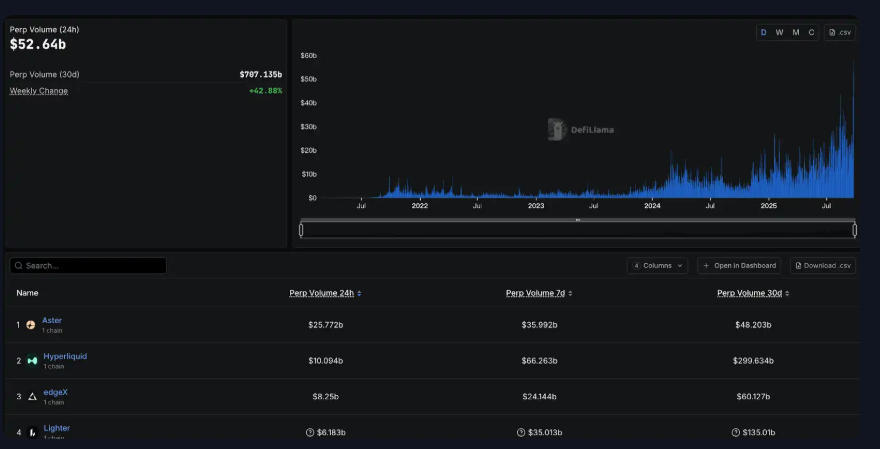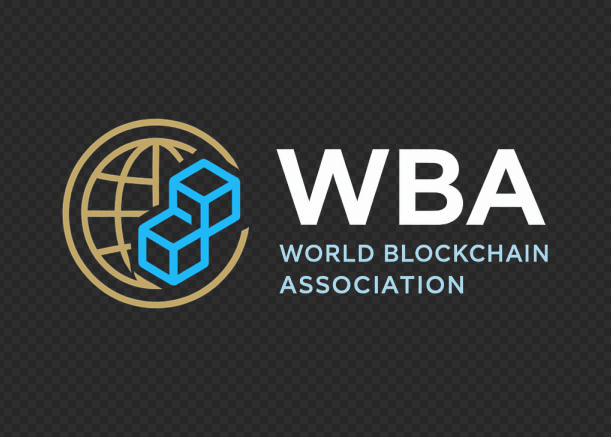
September 22, 2025 — World Blockchain Association (WBA) reports that ASTER, a newly launched decentralized perpetuals trading platform, has seen its native token skyrocket by more than fourfold in less than 24 hours. The surge came after former Binance CEO Changpeng Zhao shared a chart highlighting ASTER’s performance, which many in the cryptocurrency industry interpreted as a direct challenge to Hyperliquid, the current leader in decentralized derivatives trading.
This development underscores the intensifying rivalry within the fast-growing DeFi derivatives sector, where Bitcoin, Ethereum, stablecoins, and tokenized assets are increasingly being traded on decentralized networks rather than centralized exchanges.
The Rise of ASTER
ASTER was formed in December 2024 through the merger of two DeFi protocols: Astherus, known for multi-asset liquidity solutions, and APX Finance, a decentralized perpetual trading platform. The consolidation created a single trading infrastructure designed to rival Hyperliquid’s growing dominance.
Unlike typical decentralized exchanges that focus mainly on spot markets, ASTER has positioned itself as a comprehensive multi-chain exchange, offering both spot and perpetual derivatives markets. Its system currently supports the BNB Chain, Ethereum, Solana, and Arbitrum, with liquidity aggregated across chains to allow seamless transactions without requiring manual bridging.
Since its March 2025 soft launch, ASTER has processed over $514 billion in trading volume for 2 million users. After its token debut, the platform briefly reached a total value locked (TVL) of $2 billion before stabilizing at around $655 million.
The launch coincided with Zhao’s public endorsement, which market observers viewed as a symbolic “first strike” against Hyperliquid. Although Zhao can no longer operate Binance directly, his influence on cryptocurrency markets remains undeniable, and ASTER appears to be the most powerful competitor he has supported to date.
Tackling DeFi’s Liquidity and Transparency Challenges
One of the core innovations of ASTER lies in its architecture for combating front-running and liquidation manipulation — two persistent problems in decentralized finance. By introducing a “hidden order” system that keeps trade size and direction concealed until execution, ASTER offers traders improved fairness and market integrity.
Its margin system also stands out, allowing users to post collateral using staked assets such as asBNB or ecosystem stablecoins, while simultaneously earning passive yield. This dual-use design reflects a broader Web3 trend of maximizing capital efficiency across DeFi protocols.
Another cornerstone of ASTER’s ecosystem is USDF, its algorithmically structured stablecoin backed by delta-neutral positions. Traders can mint USDF with supported assets and deploy it as collateral while earning yield, creating a self-reinforcing liquidity cycle where stablecoin holders also function as liquidity providers.
Future developments on the ASTER roadmap include zero-knowledge proof integrations for privacy and a dedicated Layer 1 blockchain (“Aster Chain”) optimized for trading, bringing the project into direct competition with Hyperliquid’s custom L1 solution.
ASTER vs. Hyperliquid: Diverging Strategies
The World Blockchain Association points out that ASTER and Hyperliquid represent two distinct philosophies in decentralized derivatives trading:
- Hyperliquid has built a vertically integrated Layer 1 blockchain with a fully on-chain order book, achieving performance comparable to centralized exchanges. This makes it a benchmark for execution speed but also confines it to a single ecosystem.
- ASTER, by contrast, deploys across multiple blockchains, maximizing liquidity access and serving users who prefer specific chains. Though technically more complex, this strategy taps into existing DeFi ecosystems and leverages integrations with protocols like Pendle, Venus, and PancakeSwap.
Currently, Hyperliquid controls nearly 70% of the DeFi perpetuals market, with $15 billion in open interest and average daily volumes above $800 million. However, ASTER’s multi-chain model offers advantages Hyperliquid may struggle to replicate, such as capital efficiency from yield-bearing collaterals and exposure to tokenized real-world assets.
ASTER also appeals to high-risk traders by offering leverage up to 100x on most pairs — and in some cases up to 1001x — along with perpetual contracts on U.S. equities available 24/7, expanding beyond crypto-native markets.
Tokenomics and Community Ownership
ASTER’s token economy reflects a strong community-driven philosophy. Out of the total 8 billion supply:
- 53.5% is reserved for airdrops and community rewards.
- 30% supports ecosystem development.
- 7% is allocated to the treasury.
- 5% goes to the team.
- 4.5% is for liquidity and exchange listings.
This allocation makes community incentives the largest share among DeFi projects, emphasizing long-term decentralization over short-term value capture. The token offers governance rights, trading fee discounts, staking rewards, and premium access to advanced platform features.
In contrast, Hyperliquid’s HYPE token follows a more traditional revenue-driven model, using a significant portion of protocol earnings for buybacks, which has created a strong “income-buyback flywheel.” With over 43% of HYPE tokens staked and protocol revenues exceeding $1 billion annually, Hyperliquid’s model provides a high degree of price support — a challenge ASTER must overcome with broader community engagement.
Strategic Backing and Binance’s Shadow
Although Binance cannot officially compete with Hyperliquid, its venture arm YZi Labs (formerly Binance Labs) has been quietly financing ASTER’s development since late 2024. Through ecosystem partnerships — including Pendle (yield tokenization), ListaDAO (BNB liquid staking), Venus (lending), and PancakeSwap (DEX liquidity) — ASTER has become a central hub for multi-layer DeFi strategies.
This indicates Binance’s broader defensive strategy: rather than directly copying Hyperliquid’s custom chain, it is leveraging existing network advantages such as regulatory access, fiat on-ramps, and deep liquidity pools. By supporting ASTER, Binance indirectly sustains its influence over decentralized trading infrastructure.
Sustainability and Market Risks
Despite ASTER’s rapid growth, the World Blockchain Association cautions that early momentum does not always translate into sustainable adoption. The platform’s TVL fell sharply from $2 billion to $655 million within days, raising concerns about whether this growth is driven by genuine users or opportunistic yield farmers.
Moreover, while ASTER’s design prioritizes long-term decentralization and community ownership, its ability to compete with Hyperliquid’s proven buyback model remains uncertain. Success will hinge on whether traders trust ASTER enough to shift from an established, high-performance infrastructure to a newer, multi-chain experiment.
Broader Implications for DeFi
The ASTER-Hyperliquid rivalry highlights the next phase of Web3 financial evolution, where decentralized platforms are no longer fringe alternatives but serious challengers to centralized giants. Whether through DeFi derivatives, NFT integration, DAO-governed liquidity models, tokenization of real-world assets, or stablecoin innovation, the competition is intensifying.
If ASTER succeeds, it may prove that capital-efficient, community-governed protocols can rival or even surpass centralized incumbents. If not, its trajectory will serve as a cautionary tale about over-reliance on leverage and unsustainable token incentives.
Either way, the global cryptocurrency industry — from Bitcoin and Ethereum traders to institutional investors exploring tokenized assets — will be watching closely.
Conclusion
The World Blockchain Association reports that ASTER’s dramatic 400% token surge is more than just a speculative rally; it signals the beginning of a DeFi derivatives arms race. With Binance-linked support on one side and Hyperliquid’s entrenched dominance on the other, the market is entering a new era of high-stakes competition.
Whether ASTER becomes a lasting force in the blockchain industry or just another ambitious experiment will depend on adoption, sustainability, and the continued evolution of DeFi infrastructure.
About the World Blockchain Association
The World Blockchain Association (WBA) is a global organization dedicated to advancing knowledge, policy dialogue, and innovation in blockchain and digital finance. As a leader in the blockchain and cryptocurrency space, the WBA provides stakeholders with trusted insights at the intersection of technology, regulation, and global economic trends through research, reporting, and thought leadership.
Website: WorldBlockchainAssociation.org
Email: TheWorldBlockchainAssociation@gmail.com







